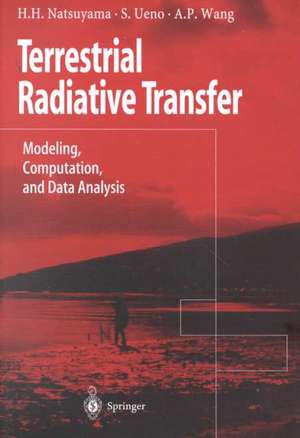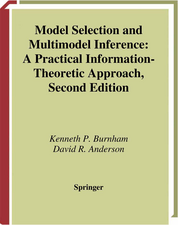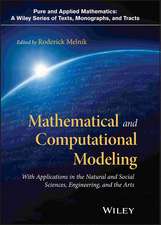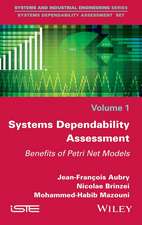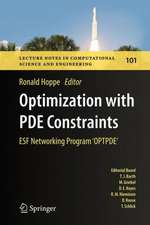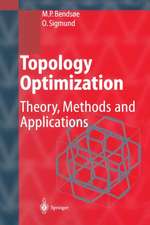Terrestrial Radiative Transfer: Modeling, Computation, and Data Analysis
Autor Harriet H. Natsuyama, Sueo Ueno, Alan P. Wangen Limba Engleză Paperback – mar 1998
Preț: 388.52 lei
Nou
Puncte Express: 583
Preț estimativ în valută:
74.35€ • 80.74$ • 62.46£
74.35€ • 80.74$ • 62.46£
Carte tipărită la comandă
Livrare economică 22 aprilie-06 mai
Preluare comenzi: 021 569.72.76
Specificații
ISBN-13: 9784431702061
ISBN-10: 4431702067
Pagini: 304
Ilustrații: XII, 292 p. 40 illus.
Dimensiuni: 155 x 235 x 16 mm
Greutate: 0.43 kg
Ediția:Softcover reprint of the original 1st ed. 1998
Editura: Springer
Colecția Springer
Locul publicării:Tokyo, Japan
ISBN-10: 4431702067
Pagini: 304
Ilustrații: XII, 292 p. 40 illus.
Dimensiuni: 155 x 235 x 16 mm
Greutate: 0.43 kg
Ediția:Softcover reprint of the original 1st ed. 1998
Editura: Springer
Colecția Springer
Locul publicării:Tokyo, Japan
Public țintă
ResearchCuprins
1. Basic Concepts.- 1.1 Introduction.- 1.2 Invariant imbedding and a simple model of reflection.- 1.3 Computation of reflection function.- 1.4 Internal intensity and source functions.- 1.5 Physical/mathematical descriptions.- 1.6 Intensity of radiation and source function.- 1.7 Discussion.- 2. Inhomogeneous Plane-Parallel Atmospheres.- 2.1 Introduction.- 2.2 Diffuse Reflection and Transmission.- 2.3 Computational method and results.- 2.4 Internal Intensity and Source Functions.- 2.5 Internal Emitting Sources.- 2.6 Reflecting Surfaces.- 2.7 Omnidirectional Illumination.- 2.8 Discussion.- 3. Inverse Problems.- 3.1 Introduction.- 3.2 Associative memories.- 3.3 Quasilinearization.- 3.4 FEED automatic derivative evaluation.- 3.5 Inverse problems for inhomogeneous media and effect of criterion on estimates.- 3.6 Other inversion techniques.- 3.7 Discussion.- 4. Anisotropic Scattering.- 4.1 Introduction.- 4.2 Phase function dependent on polar angles.- 4.3 Phase function expandable in Legendre polynomials.- 4.4 Estimation of Phase Function.- 4.5 Flux Equivalences.- 4.6 Three-Dimensional Reflection and Transmission.- 4.7 Concluding Remarks.- 5. Finite Orders of Scattering.- 5.1 Introduction.- 5.2 Scattering and Transmission Functions of Finite Order.- 5.3 The Auxiliary Equation and its Solution.- 5.4 Cumulative Functions.- 5.5 Discussion.- 6. Scattering Matrix.- 6.1 Introduction.- 6.2 The Scattering Matrix.- 6.3 The Homogeneous Medium.- 6.4 The Transport Equation.- 6.5 The Star-Semi-Group.- 6.6 The n Terms Solutions.- 6.7 The Discrete Case.- 6.8 The Time-Dependent Case.- 6.9 Concluding Remarks.- 7. Atmospheric Correction.- 7.1 Introduction.- 7.2 Radiative Processes in the Atmosphere.- 7.3 Atmospheric Correction for Landsat Data.- 7.4 Atmospheric Correction for Aircraft Data.- 7.5Outline of the AECS Software.- 7.6 General Models and Approximations.- 7.7 Results and Discussion.- References.- 8. Topographic Effects in Terrestrial Remote Sensing.- 8.1 Introduction.- 8.2 Flat Terrain.- 8.3 Rugged Terrain.- 8.4 Model Rendering.- 8.5 Topographic and atmospheric correction of satellite data.- 8.6 Discussion.- 9. Searchlight Problem.- 9.1 Introduction.- 9.2 Basic Equations.- 9.3 Equation of Transfer.- 9.4 Asymptotic Solutions.- 9.5 Approximations.- 9.6 Numerical Simulation.- 9.7 Conclusions.- 10. Transfer of Radiation with Spherical Symmetry.- 10.1 Introduction.- 10.2 Intensity and Operations.- 10.3 Transfer of Radiation.- 10.4 Coefficients of the Medium.- 10.5 State and Local Form.- 10.6 The Reflecting Core.- 10.7 Special Cases and Applications.- 10.8 Numerical Solution of Functional Equations for Spherical Geometry.- 10.9 Numerical Estimation of Derivatives.- 10. 10 Perturbation Approximation.- 10.11 Numerical Results.- 10.12 Discussion.- 11. Bibliography.- A. Appendix A.- The Physical Problem of Radiative Transfer.- A.1 The Intensity of Radiation.- A.2 The Absorption and the Scattering Coefficients.- A.3 The Phase Function.- A.4 The Emission Coefficient, The Mean Intensity and the Source Function.- A.5 The Net Flux and the Density of Radiation.- A.6 The Equation of Transfer.- A.7 Discussion.- References.- B. Appendix B.- Derivation and Validation of Imbedding Equations.- B.1 Introduction.- B.2 Source Function.- B.2.1 Integral equation.- B.2.2 Derivation of the integral equation.- B.2.4 Analytical derivation of the imbedding equations.- B.3 Reflected Intensities.- B.3.2 Imbedding equations.- B.4 Internal Intensities.- B.4.1 Introduction.- B.4.2 Imbedding equations.- B.4.3 Discussion.- B.5 The Fredholm Resolvent.- B.5.1 Resolvent for Fredholm integralequations.- B.5.2 Resolvent for radiative transfer in a homogeneous slab.- B.5.3 Invariant imbedding for the resolvent.- B.6 Discussion.- References.- C. Appendix C.- Greenhouse Effect.- C.1 Introduction.- C.2 Integral Equation for Source Function.- C.3 Invariant Imbedding.- C.4 Computational Method.- C.5 Computational Results.- References.- D. Appendix D.- Identification of an Atmospheric Medium.- D.1 Introduction.- D.3 Scattering Matrix from Inputs and Outputs.- D.4 Relationship between Scattering Matrices.- D.5 Conclusion.- References.
